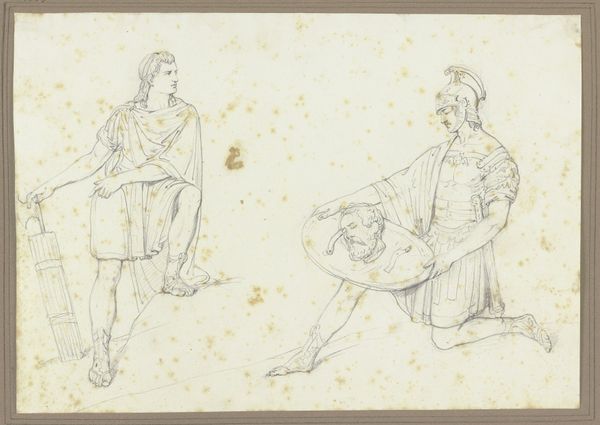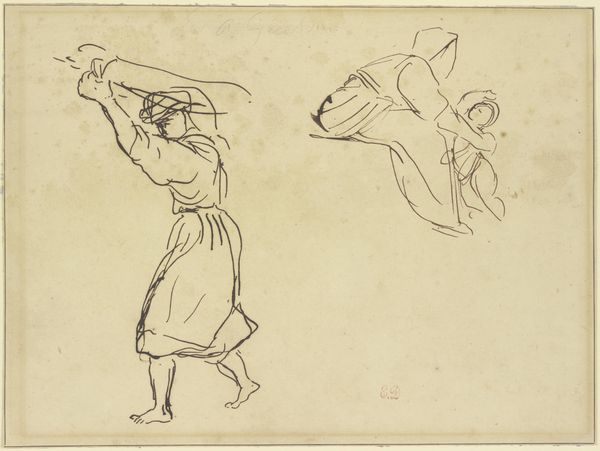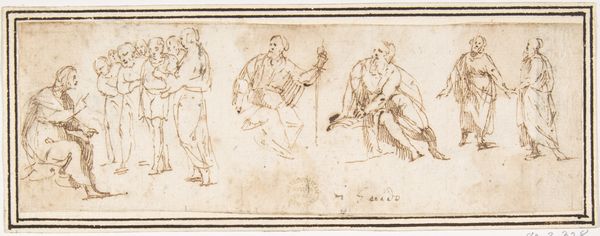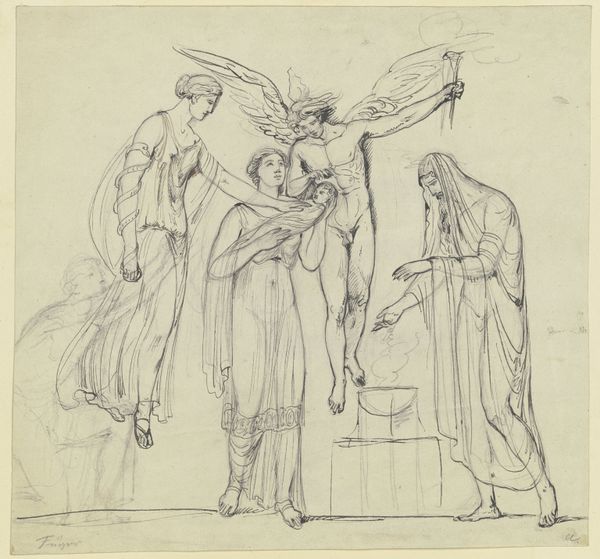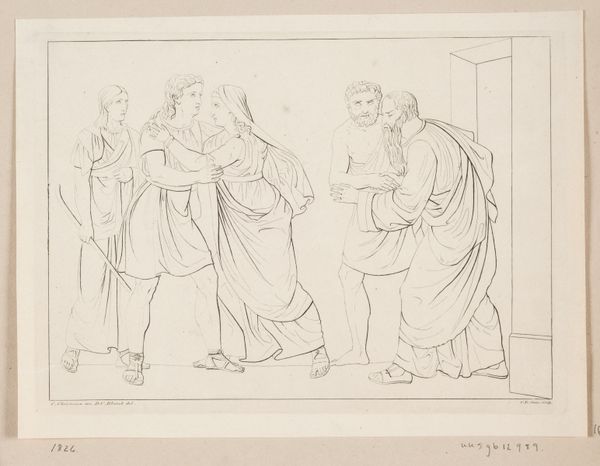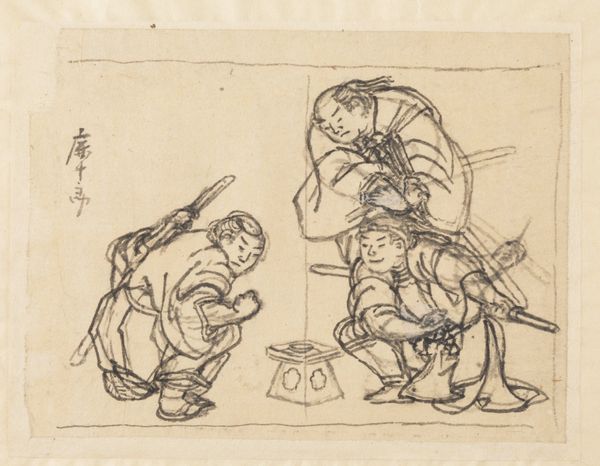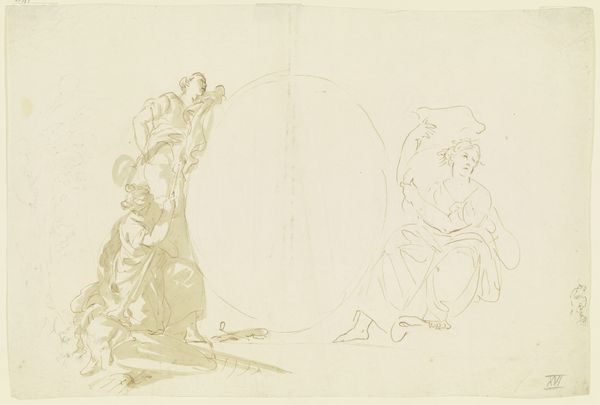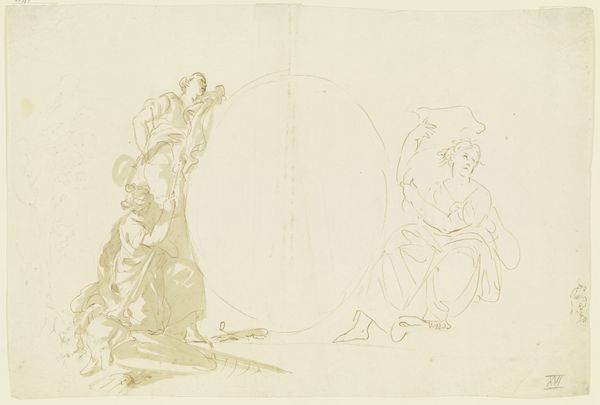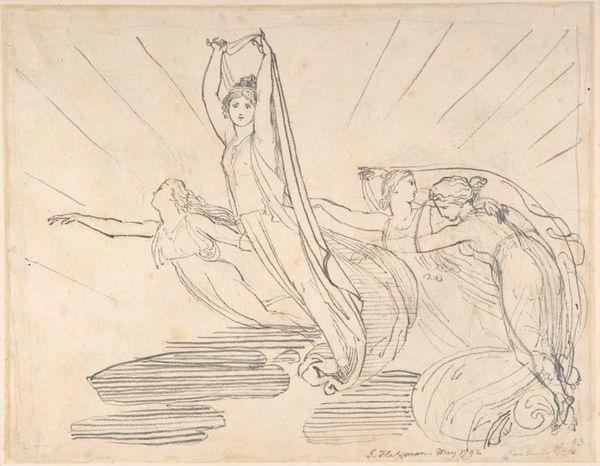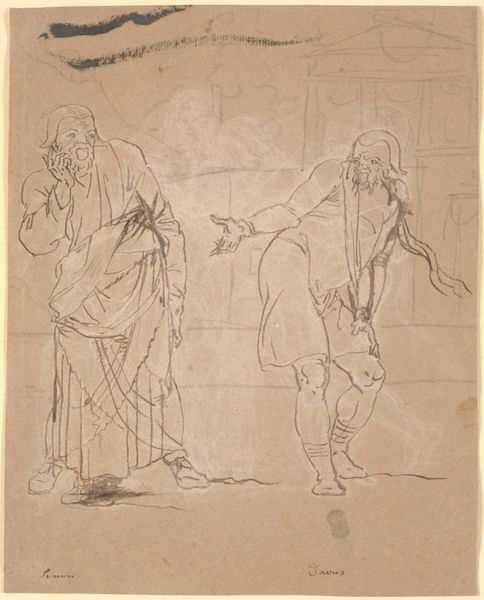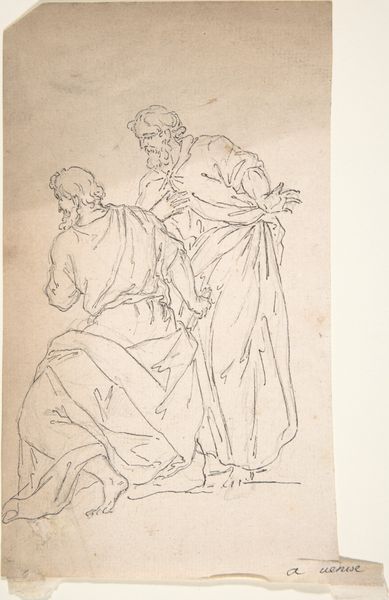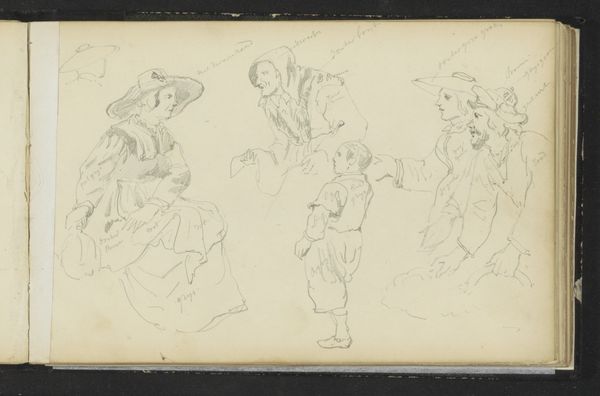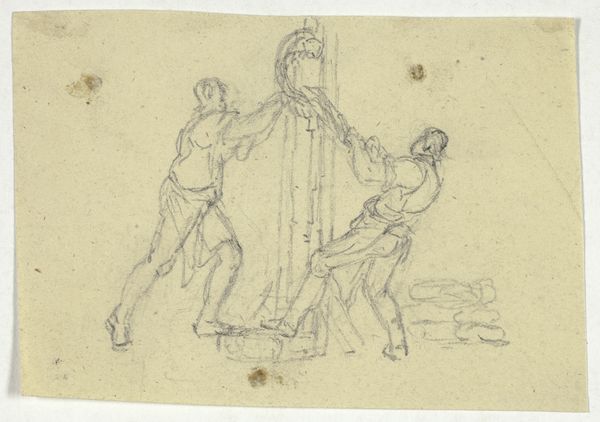
drawing, ink
#
drawing
#
16_19th-century
#
narrative-art
#
figuration
#
ink
#
german
#
romanticism
#
history-painting
Copyright: Public Domain
Editor: So, this drawing, "Szene am Ausgang der Kirche_ Faust und Gretchen," by Peter Cornelius, dates back to around 1811. It’s done in ink, and the linear quality gives it such a raw, immediate feel. What catches your eye? Curator: What immediately strikes me is how Cornelius is using a popular cultural narrative, Goethe's Faust, to explore early 19th-century anxieties about morality and individual agency. It is an ink drawing, meaning it served a purpose - but what? The rapid execution is fascinating, indicating perhaps that Cornelius envisioned this drawing as preparatory, to make use of these archetypes later in painting. Are these historical renderings merely romantic nostalgia or subtle commentary on Cornelius' present? Editor: Interesting! So, you’re seeing the work in relation to broader social debates of the time? Does the way Faust gestures and Gretchen averts her eyes communicate a distinct viewpoint about those debates? Curator: Precisely. Think about how the Romantics were grappling with reason versus emotion. This scene, the moment after Gretchen realizes the darkness she’s involved in, perfectly encapsulates that conflict. Now, consider the role of the church in society back then, and how artists used these familiar religious spaces to stage dramas of conscience. Are we meant to pity Gretchen? To blame Faust? Is the historical nature of the piece critical in helping audiences accept and absorb potentially blasphemous or critical positions? Editor: I never considered the public consumption aspect that way. Viewing art in the Romantic era as staged dramas provides an interesting, politically potent perspective. Curator: Exactly. Looking through a socio-political lens opens the artwork for deeper inspection beyond just admiring skill or subject. It is not just lines on paper, but the potential for a national argument visualized. Editor: This was truly enlightening; thanks for helping to contextualize Cornelius’ drawing within the history of its time!
Comments
No comments
Be the first to comment and join the conversation on the ultimate creative platform.
